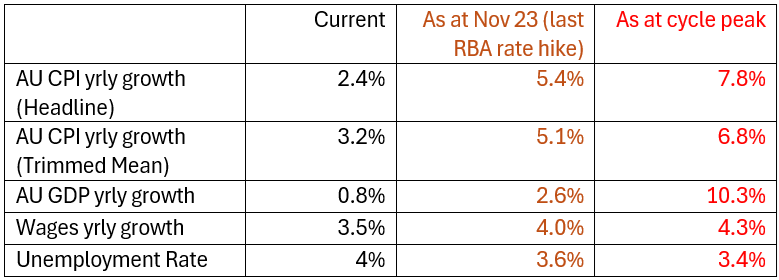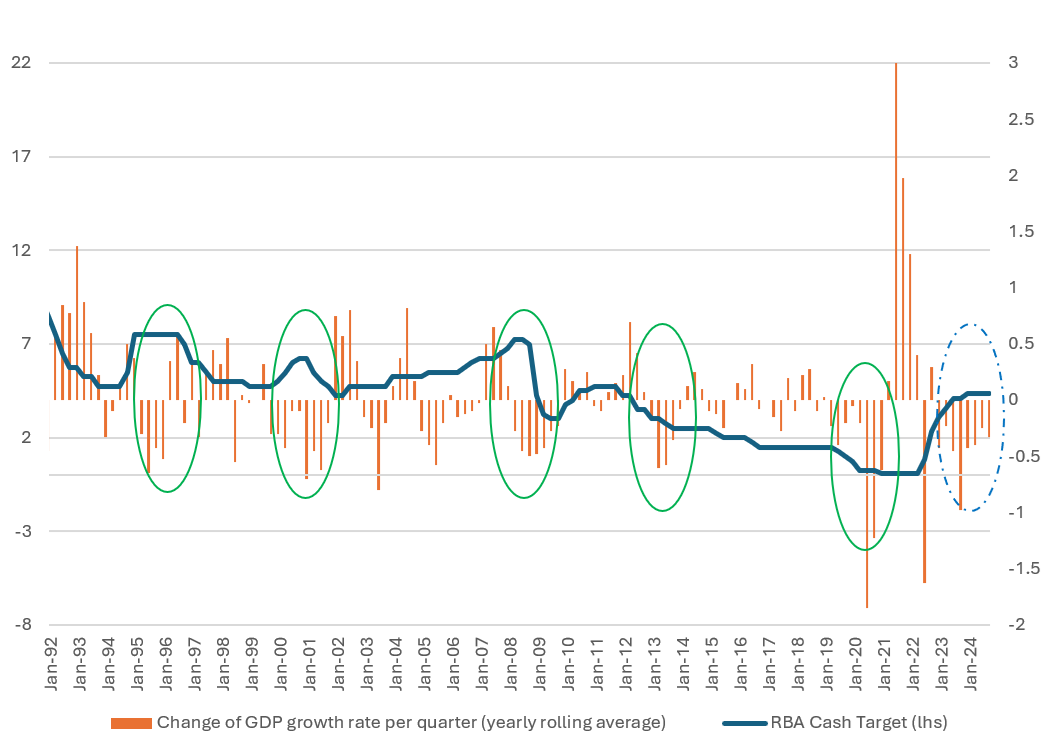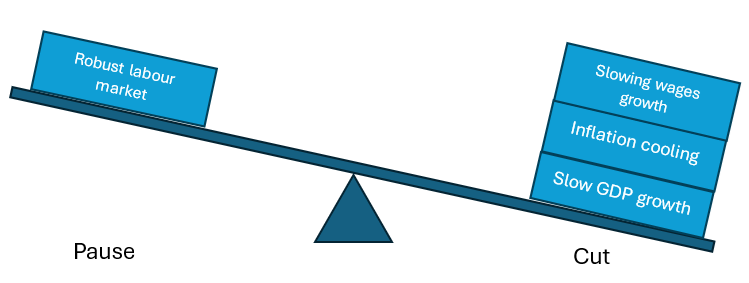The seesaw of economic trends tipping towards a Feb rate cut
There is a considerable amount of noise as we head into this week’s much anticipated first RBA meeting of the year. There are plenty of arguments either side on why the RBA should or should not cut its policy rates this meeting, but the easiest way to decipher it all is to reflect on why the RBA hiked rates in the first place and whether they have achieved those goals.
The RBA has consistently emphasised that their top priority is to bring the rates of inflation down. To get there they increased interest rates by 4.25% over the span of 18 months, causing a lot of pain to debtholders along the way. Has that worked? Let’s examine the changes in key economic indicators over this rate hike cycle:

Source: ABS, Bloomberg, YCM.
The table above confirms that the most significant impacts have occurred after the final rate hike, validating the RBA’s view – and our own – that “monetary policy acts with a lag”. Now, some 15 months on from November 2023, inflation pressures have indeed eased, with headline CPI now within the RBA’s 2-3% target band, and trimmed mean CPI – a measure that the RBA has emphasised more in recent meetings – is slowing at a faster pace than the central bank’s own forecasts. Furthermore, Gross Domestic Product (GDP), a key measure of growth in the economy has now slowed to a worrying low pace of 0.8%, the lowest yearly growth rate over the past 35 years (excluding the pandemic shocks in March 2020).
It is noteworthy that the RBA has almost always cut policy rates when the pace of GDP growth is negative for a sustained period of time (refer Chart 1). This is because slowing growth in the economy without monetary and fiscal intervention may lead to a recession. Lower GDP growth can also be seen as a leading indicator for rising unemployment and a weaker labour market. Looking at where we are currently (Dotted circle in Chart 1) suggests that RBA should have already cut interest rates by now.
Chart 1: GDP growth vs. RBA Cash Target

Source: ABS, Bloomberg, YCM.
The key reason the RBA has held off on cutting for so long is due to the surprising resilience of the labour market. It has given Australia’s central bank some confidence to keep policy rates at restrictive levels pending conclusive evidence that inflation is slowing sustainably towards the target band. The most recent quarterly CPI data confirms that this has been achieved, taking away the [penultimate] reason to keep interest rates high (refer graphic).
If policy rates remain restrictive from here, the RBA risks stifling growth further and potentially causing a recession. The seesaw has indeed tipped towards the need to cut at the February meeting.


1 fund mentioned

